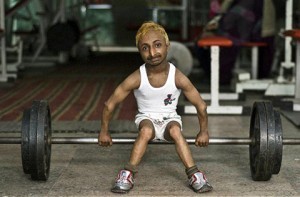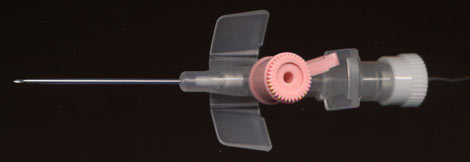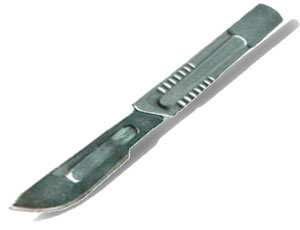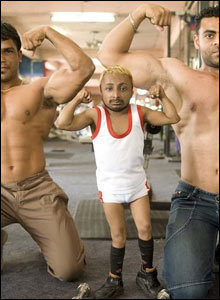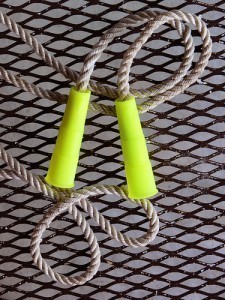What are the Sizes of Barbells?
Used for weightlifting and weight training, the barbell is a familiar fixture in gym’s everywhere. As to what are the sizes of barbells, they range in size from 4 feet (1.2 meters) to 8 ft (2.4 m) in length, though there are bars with a length of over 7 ft that are mainly used by power lifters.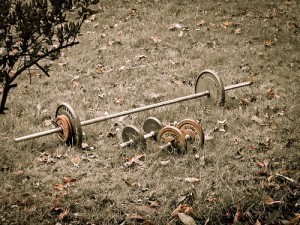
The barbell’s central portion comes in various diameters, but is nearly 2.54 centimeters (1 inch), and usually has a knurled crosshatch pattern engraved on it to give the lifter a good grip. The barbell’s disc weights or plates are slid onto the bar’s outer portions in order to obtain the total weight desired. The plates are usually secured using collars so that they do not slide off while exercising, as well as to keep the unevenly loaded barbell from flinging through the air.
The standard barbell has a thickness of 28 to 32 millimeters all the way along, excluding the wider rings that demarcate the end sections. While a standard barbell does not have a standard length or weight, calculating the total plate/bar weight yields a length of 7 ft (2.1 m) and a weight of around 20 kilograms.
EZ curl bars are much shorter and weigh even less, with the bar’s weight estimated at around 3 kg/ft. Fixed barbells, mainly located in gyms, come with the plates already attached to the bar, sometimes with a plastic or rubber covering around the plates. Ideal for beginning lifters, a fixed barbell’s total weight can be much less than a 5-foot 2 inch-thick bar.
An Olympic barbell is comprised of a bar with rotating sleeves so that the plates can spin on their own axis, eliminating the rotational-inertia effect on the lifter while lifting and enabling him to easily descend under the bar. A men’s Olympic bar measures a length of 7.22 ft (2.2 m) and a weight of 44.1 pounds (20 kg).
The outer ends of a men’s bar have a diameter of 50 mm (1.9685 inches) and the grip section has a diameter of 28 mm (1.1024 inches) and a length of 1,310 mm (51,57 inches). The grip marks on the bars are spaced 910 mm apart to enable intuitive grip width measurement. The barbell’s total weight varies according to the weight and number of plates that are loaded onto the bar’s ends, with a lift’s total load going up to 1,200 lbs (540 kg).
The women’s Olympic bar is somewhat similar but much shorter than the men’s bar at 6.73 ft (2.05 m) and lighter at 33.07 lbs (15 kg). Its grip section diameter is also smaller at 25 mm, and unlike the men’s bar, it does not have a center knurl.
The plates employed in Olympic lifting, often referred to as “bumper” plates, come in a range of weights designated according to color: red – 5.51 lbs (2.5 kg) and 55.12 lbs (25 kg), blue – 4.41 lbs (2 kg) and 44.09 lbs (20 kg), yellow – 3.31 lbs (1.5 kg) and 33.07 lbs (15 kg), green – 2.20 lbs (1 kg) and 22.05 lbs (10 kg), and white – 1.10 lbs (0.5 kg) and 11.02 lbs (5 kg).
Olympic plates weighing 10 kg or more have a diameter of 450 mm. Collars can be made from any material (usually metal) and can be up to 2.5 g in weight both for men and women. Depending on the collars, a men’s bar can weigh (excluding the plates) up to 25 kg, while a women’s bar can weigh up to 20 kg.
